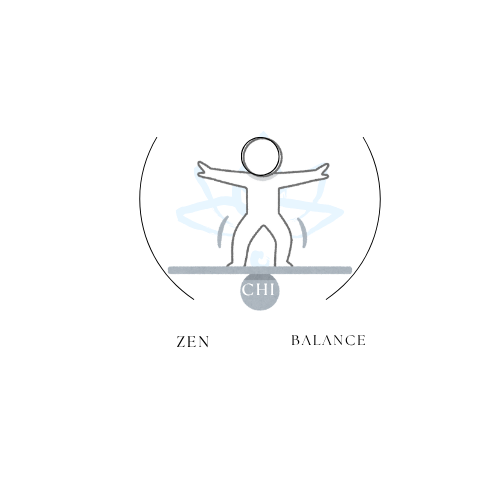
Energy Alignment Practices for Clear Focus and Flow
Share
Updated on: 2025-10-23
Energy alignment guide: table of contents
- Understanding energy alignment: purpose and basics
- Product spotlight: gentle tools for energy alignment practice
- Step-by-step how-to: energy alignment techniques for beginners
- Personal experience: a thoughtful energy alignment check-in
- Summary and recommendations for calm vibrational alignment
- Questions about energy alignment: FAQ
Understanding energy alignment: purpose and basics
Energy alignment is a simple idea: it is the practice of bringing your inner state into a calm, steady flow so your thoughts, emotions, and actions feel coherent. Many people refer to this as energetic alignment, energy attunement, or vibrational alignment. While approaches vary, the intent stays gentle and consistent—creating space to notice your patterns, relax tension, and support a more centered day. If you are curious about What is energy alignment and how does it work?, think of it as a mindful check-in that helps you listen to your body and focus your attention with care. It does not aim to treat conditions; rather, it offers structure for self-reflection and calmer routines.
Some people also pair energy alignment with chakra balancing, which is a way of organizing attention across different areas of the body. You do not need to adopt any specific framework to benefit. The most helpful path is often the most practical one—small, consistent moments of presence. If you are just starting, consider gentle energy alignment techniques for beginners that fit into short breaks. A few minutes before your first meeting or a quiet pause before bedtime can be a good place to begin.
To keep this guide accessible, you will find a product spotlight, a short routine, and a set of questions to help you notice signs of misalignment. These resources are not prescriptive. Please feel free to use only what feels comfortable.
Product spotlight: gentle tools for energy alignment practice
This section highlights a simple, tactile tool that many people find encouraging when building a daily energy alignment practice: a lightweight, natural-stone bracelet intended as a mindfulness anchor. The intention is not to deliver specific outcomes, but to give your hands a calm focal point while you breathe and check in with your state.
Why this kind of product may be helpful:
- Soft reminder: A bracelet or bead set can act as a cue to pause, inhale, and exhale. Many users appreciate having a physical touchpoint for energy attunement.
- Portable and discreet: You can use it during a break, while journaling, or before sleep without drawing attention.
- Supports consistent habits: Linking the sensation of the bracelet to a breath count or an affirmation can help you form a steady practice of energetic alignment.
If you prefer to explore mindful accessories or simple tools, you might like to browse the collection pages for inspiration. You can start with Zen Chi Balance or view a wider range on Collections. These links are provided so you can discover items that match your routine and style.
Step-by-step how-to: energy alignment techniques for beginners
This calm, beginner-friendly routine offers a short sequence you can adapt at any time of day. It focuses on breath, posture, and simple attention cues, and it can support broader practices such as chakra balancing and vibrational alignment.
-
Set a gentle intention (30 seconds)
Decide on a kind, simple theme like “ease,” “clarity,” or “steady.” Say it quietly to yourself. This is your anchor for the session and can help you remain present. -
Find a comfortable posture (1 minute)
Sit or stand with relaxed shoulders. Lengthen your spine. Soften your jaw. Let your hands rest on your lap or hold your mindfulness bracelet if you prefer a tactile cue. -
Practice calm breathing (2 minutes)
Inhale through your nose for a count of four, pause for a count of two, and exhale for a count of six. Repeat for about ten breaths. If counting feels stressful, release the count and return to soft, even breaths. -
Scan for energetic alignment (2 minutes)
Gently scan from head to toe. Notice where your attention clings or drifts. If you like, imagine a smooth line of breath moving along your spine. This is a simple way to invite vibrational alignment without forcing anything. -
Add a brief chakra balancing check-in (1 minute)
Without overthinking, place a hand over the center of your chest. Breathe with ease. If helpful, say, “I am present.” You can repeat this at your lower abdomen and between the eyebrows. Keep it light and exploratory. -
Close with a practical alignment note (1 minute)
Ask: “What one small action supports today’s alignment?” Choose something kind and actionable—like a glass of water, a five-minute walk, or turning off notifications for ten minutes. Keep it simple.
Tips to personalize this routine:
- For a focused energy attunement session, set a one- to five-minute timer so you do not need to track time.
- To build a habit, attach the routine to a daily cue such as making tea or closing your laptop.
- If you are curious about how to achieve energy alignment for better sleep, try the same sequence while lying on your side with dim lights and a slower exhale.
If you enjoy pairing your practice with simple journaling, a small notebook can help capture patterns you might otherwise miss. You may also find it helpful to learn more about the brand’s story and values by visiting About. Many readers appreciate context when choosing mindful tools.
Personal experience: a thoughtful energy alignment check-in
A short story from a calm morning might be helpful. After waking, I noticed a busy mind and a tight jaw. Rather than reaching for my phone, I sat at the edge of the bed and placed a hand on my chest. I took ten slow breaths and repeated a quiet phrase: “Steady and kind.” With each exhale, I let my shoulders drop a little more. After a simple scan from head to toe, I felt a small shift—less inner chatter and a clearer sense of what mattered. I wrote one note in a notebook: “Move with care.”
This experience did not solve every concern of the day, and it did not aim to. It offered something smaller and very useful: a reset point. For me, that felt like energetic alignment—the sense that my thoughts, breath, and actions were moving in the same direction. The moment was brief, yet it shaped the pace of the morning. It also reminded me that energy alignment is a practice of attention, not perfection. On some days it takes ninety seconds; on others, it takes a few gentle tries and a walk around the block.
Summary and recommendations for calm vibrational alignment
Energy alignment can be as simple as choosing one kind intention and a slow breath. If you explore energetic alignment or energy attunement, consider starting small, staying curious, and letting your practice remain kind. You can use tactile anchors like a bracelet or beads, a short journaling prompt, or a single affirmation. Each of these may help you return to presence when your mind feels scattered.
Recommendations if you are beginning:
- Keep it brief and consistent. One to three minutes done most days can support steadier attention.
- Use clear cues. Pair your routine with something you already do—like making coffee or closing a work session.
- Stay flexible. If a technique feels forced, try a different time of day or a shorter step.
- Reflect gently. A weekly note about what helped can highlight your personal alignment patterns.
If you wish to explore mindful items to support your routine, browsing curated collections can be a simple next step. You might find helpful options through Collections, and you can reach out with any questions via Contact. Whether you prefer breathwork, body scanning, or quiet journaling, the kindest plan is the one you will enjoy returning to.
Finally, please remember that energy alignment is a personal practice and not a substitute for professional advice. This guide is intended for general information and supportive routines.
Questions about energy alignment: FAQ
What is energy alignment and how does it work?
Energy alignment is a mindful practice that helps your thoughts, emotions, and actions move in a more coherent way. It “works” by inviting awareness: you pause, breathe, and notice your inner state with care. Many people use frameworks such as energetic alignment, vibrational alignment, or chakra balancing to organize attention. The process is gentle—no forcing, no complex rules—just steady check-ins that support clarity and calm routines.
How do I know if my energy is out of alignment?
There is no single test, but common signs include feeling scattered, rushed, indecisive, or unusually tense without a clear reason. You might also notice fragmented focus, interrupted sleep routines, or frequent second-guessing. A quick scan can help: pause for ten slow breaths and ask, “What feels tight or noisy inside?” If you feel more settled after a minute of attention, that shift often indicates you were a bit out of alignment and are moving back toward center.
What are simple energy alignment techniques for better sleep?
Many people find a short pre-bed practice helpful. Try a dim-light breath routine: inhale for four, exhale for six, and relax your jaw and shoulders. Place a hand over your chest, then your lower abdomen, and repeat a calm phrase like “soft and steady.” Keep the entire session under five minutes so it remains easy to repeat. If you wear a mindfulness bracelet, let your fingers rest on a bead to anchor attention while you drift toward rest. This gentle approach is one way to explore how to achieve energy alignment for better sleep.

I'm a passionate curator at Zen Chi Balance, dedicated to spreading calm, harmony, and mindful living through faith-inspired lifestyle products. I help craft meaningful experiences for our global community of mindful shoppers.
The content provided is for informational and inspirational purposes only. It is intended to encourage personal growth, mindfulness, and balance in daily life. Zen Chi Balance does not provide medical, legal, or professional advice. For specific concerns or guidance, please consult a qualified professional. Visit us at www.zenchibalance.com for more inspiration and resources.
